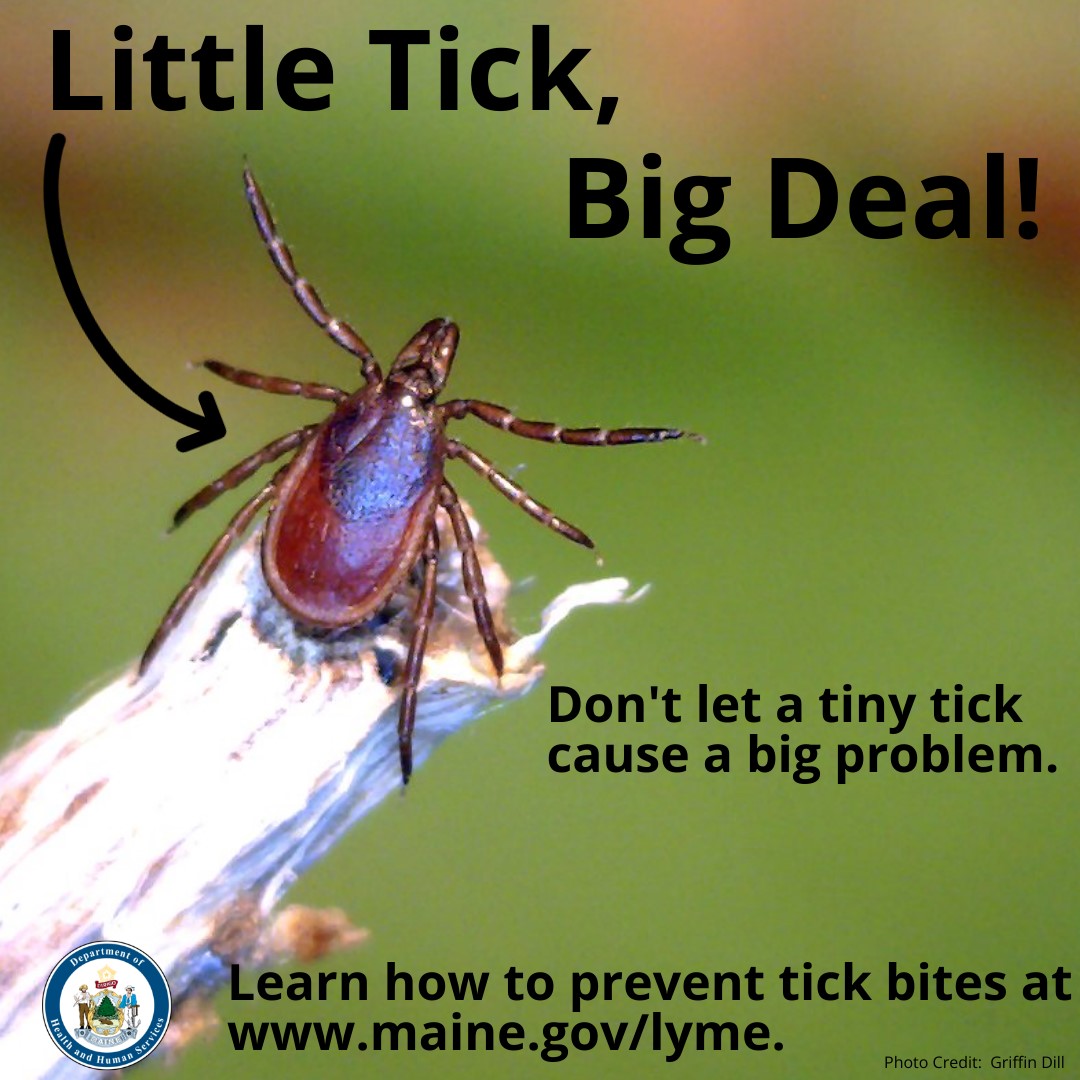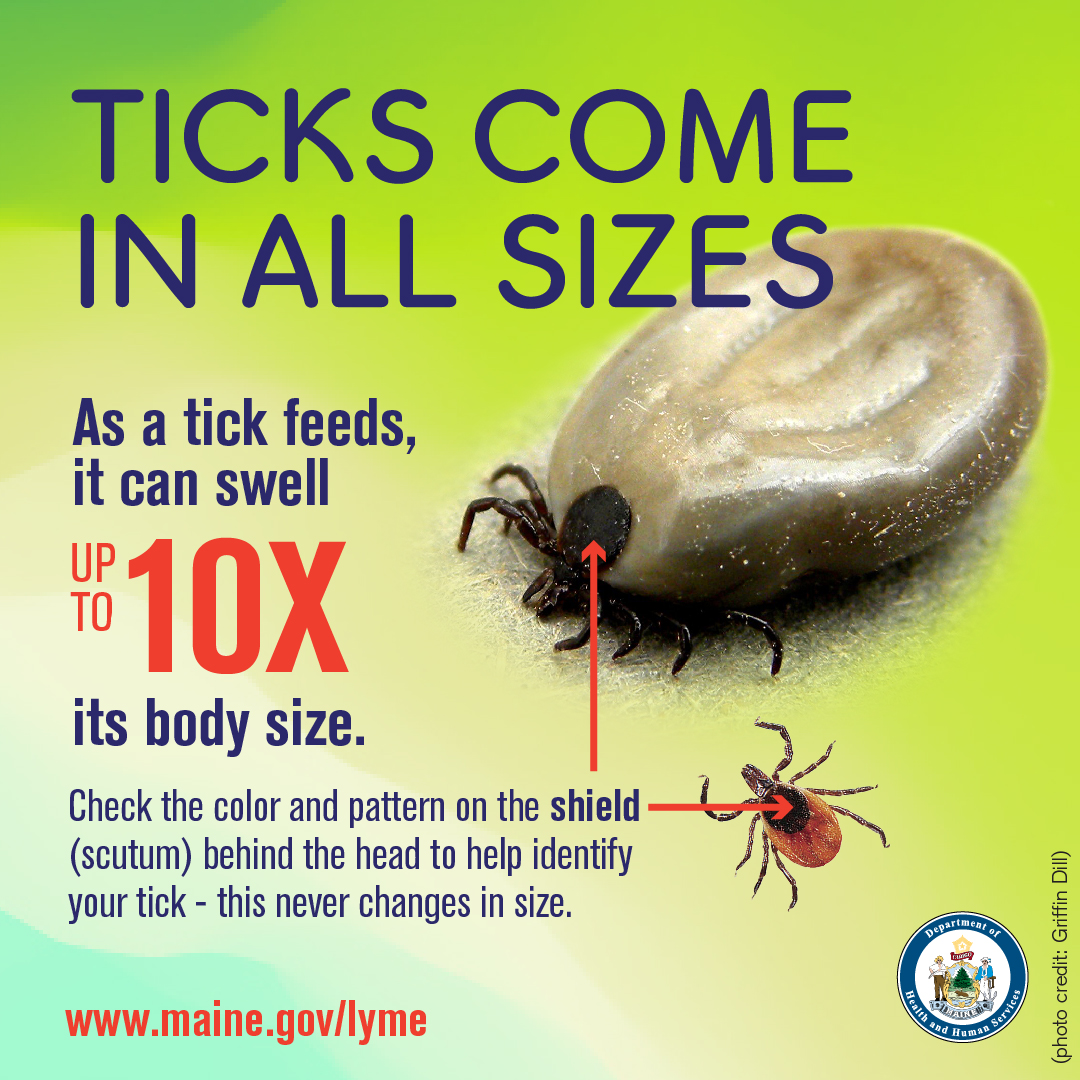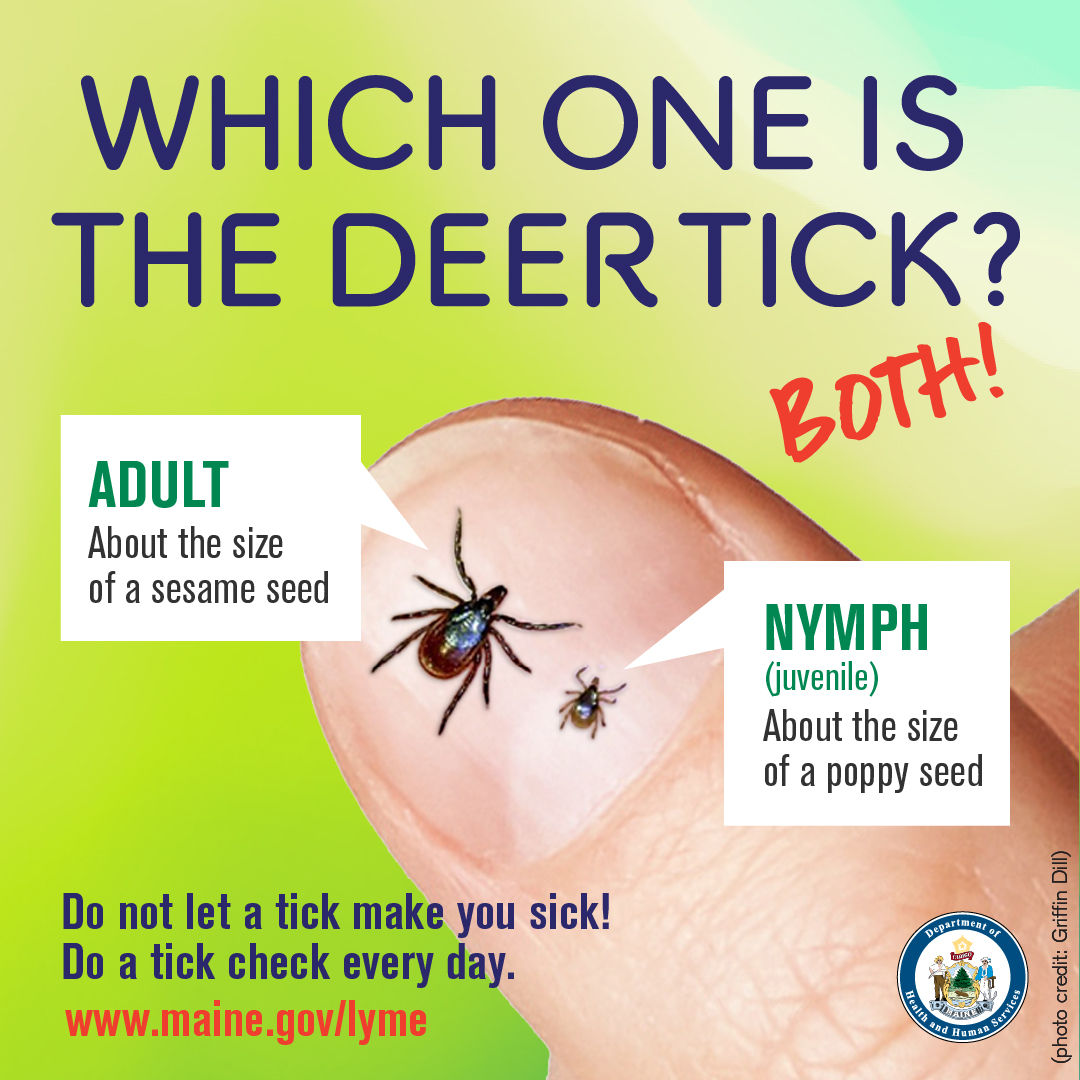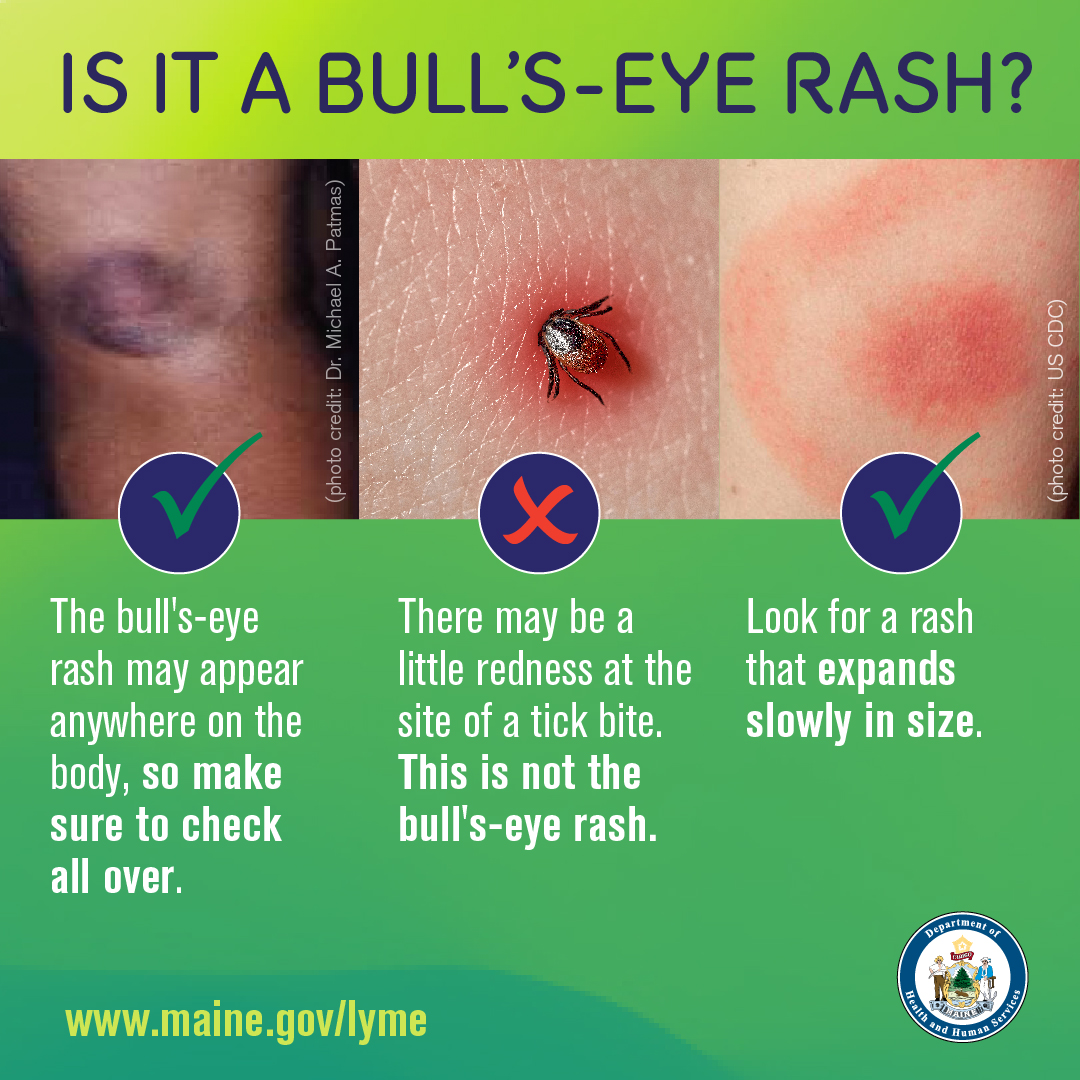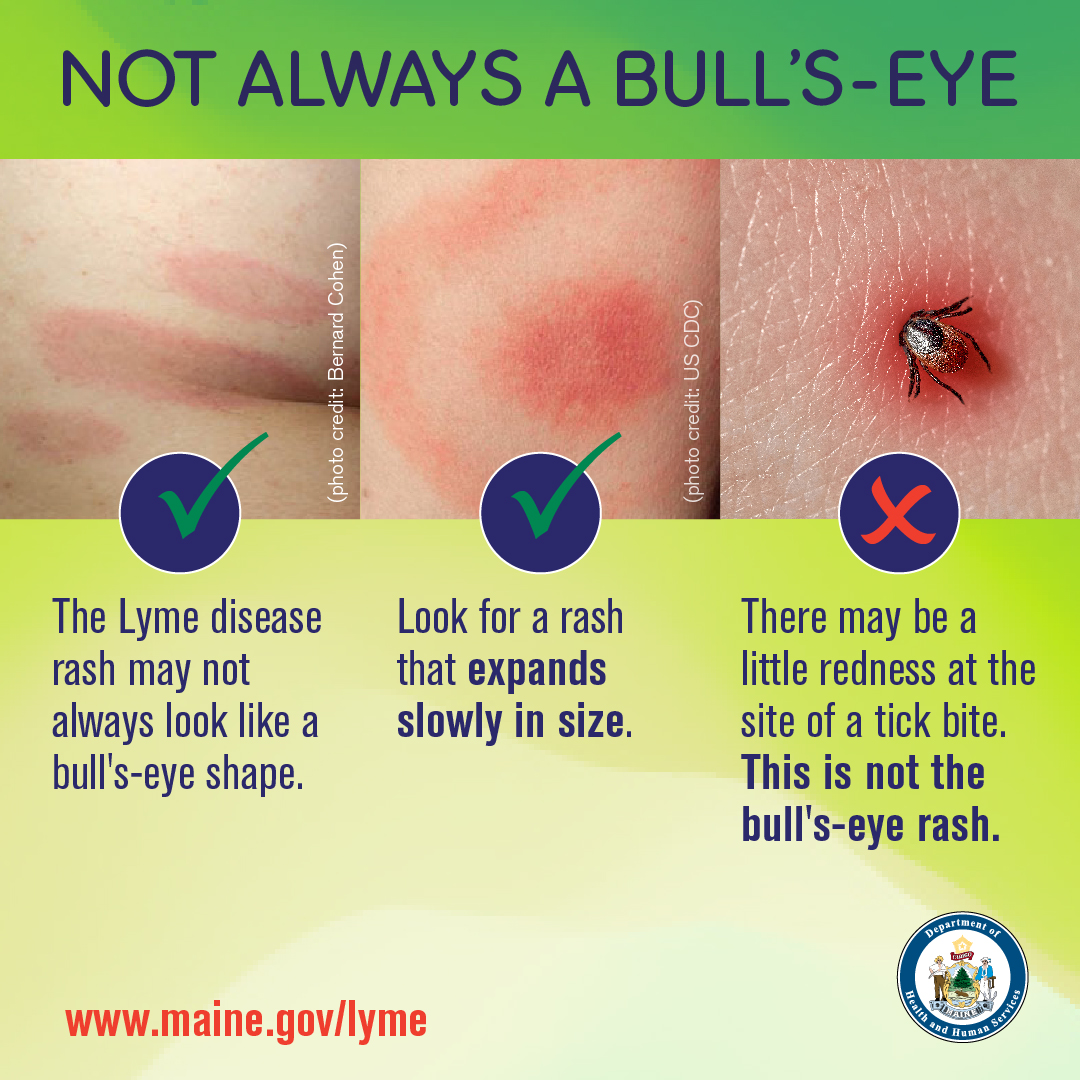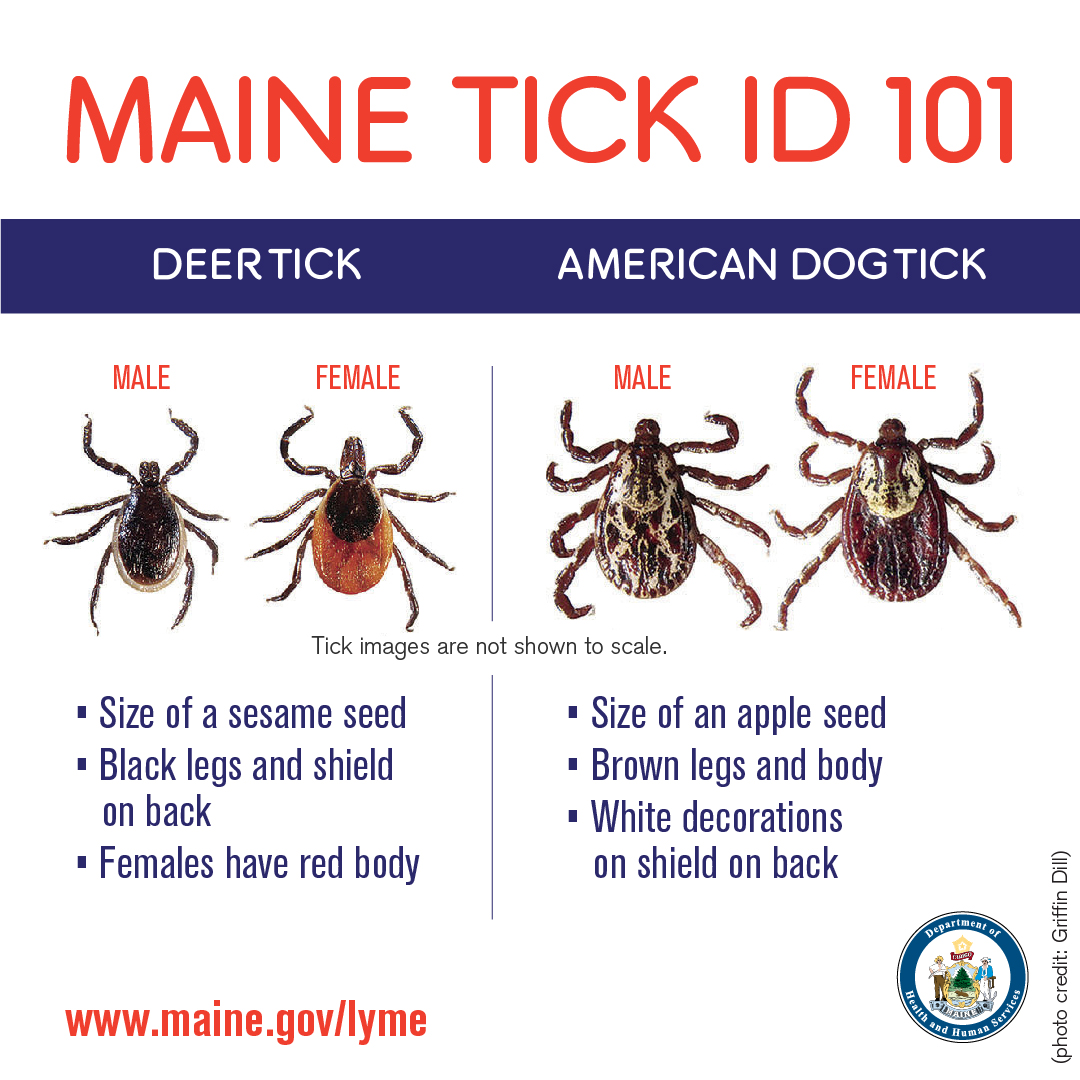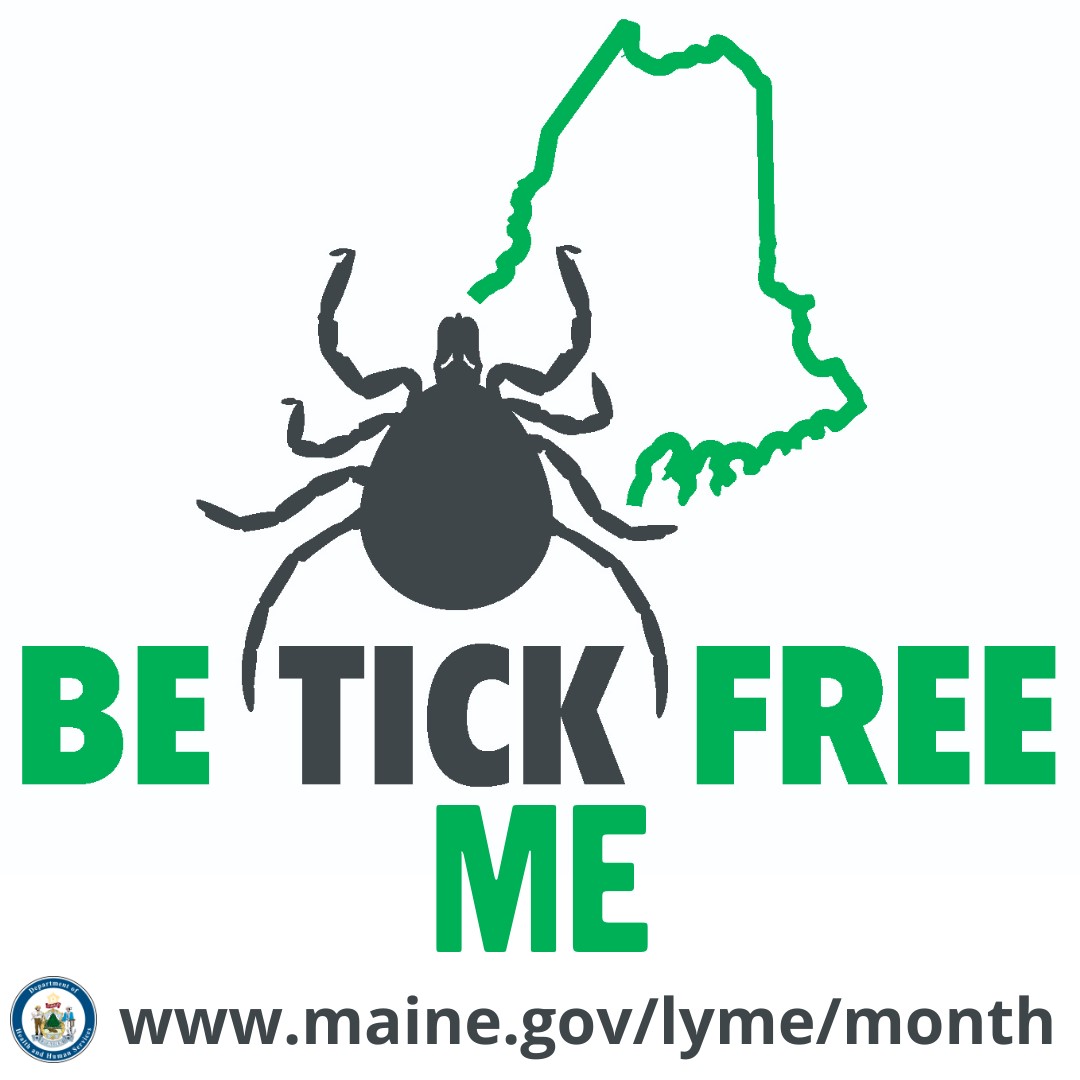DHHS → MeCDC → Disease Surveillance → Epidemiology → Vector-borne Diseases → Anaplasmosis
Anaplasmosis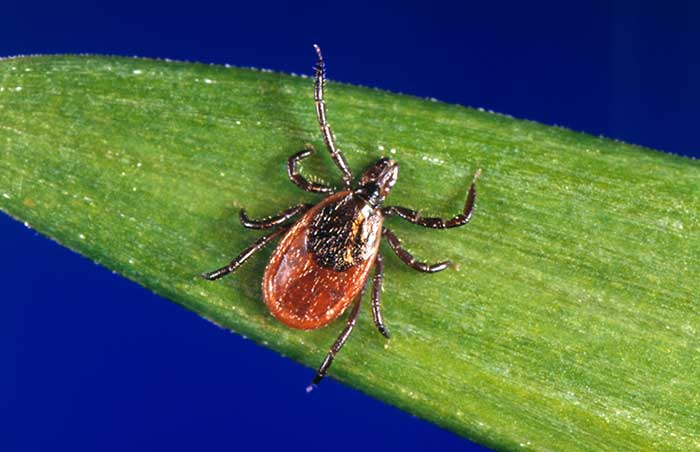
On this page:
- About Anaplasmosis
- Symptoms
- Prevention
- Resources for Educators
- Reports and Publications
- Social Media Toolkit
- Resources
Photo credit: US CDC
About Anaplasmosis
Anaplasmosis is a disease caused by the bacterium Anaplasma phagocytophilum. This bacterium infects white blood cells (neutrophils) in the immune system.
Anaplasmosis is transmitted to a person through the bite of an infected deer tick (Ixodes scapularis). Anaplasmosis cases appear to be increasing in Maine as the deer tick spreads throughout the state.
Anaplasmosis is treatable with antibiotics. The best way to prevent anaplasmosis is by avoiding tick bites.
Symptoms
Signs and symptoms of anaplasmosis begin 1-2 weeks after the bite of an infected tick. Signs and symptoms may include:

Fever and chills

Headache

Muscle pain

Nausea and abdominal pain
More severe signs and symptoms may include:

Difficulty breathing

Kidney failure
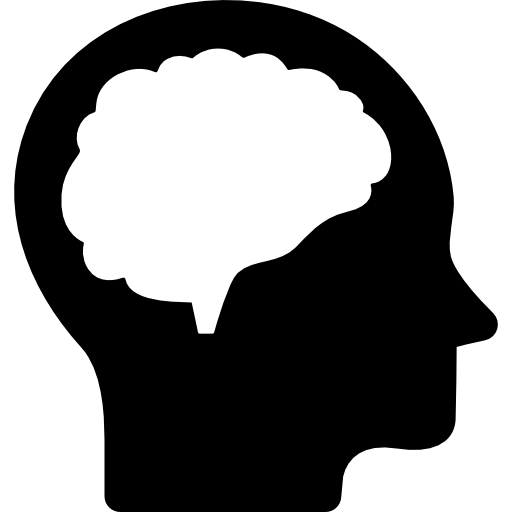
Neurologic problems
See a healthcare provider if you become ill after being bitten by a tick or spending time in areas where ticks commonly live. Be sure to mention a recent tick bite or time spent in tick habitat to your healthcare provider.
Prevention
Prevent Tick Bites
The best way to prevent anaplasmosis is to prevent tick bites in the first place. Take these simple steps every day to prevent tick bites:

Wear light-colored, long-sleeved clothing and pants. Tuck your pants into your socks.

Use an EPA-approved bug spray.

Stay in the middle of trails.

Do daily tick checks and check your pets for ticks.
Protect Your Yard From Ticks
You can make your yard a tick-safe zone:
- Keep the lawn mowed.
- Keep leaves raked and get rid of leaf piles.
- Move wood piles away from the house. Mice like to live here and can bring ticks with them.
- Move birdfeeders away from the house, gardens, and yard toys. Deer and mice like birdfeeders and can bring ticks into the yard.
- Use crushed stone or woodchips to make a tick-safe barrier around your yard. This should be 3-feet wide to separate the yard from the woods and keep ticks from crossing into the yard.

Resources for Educators
Maine CDC developed vectorborne school curricula for 3rd-8th grade classrooms. The curriculum is aligned with Maine Learning Results. School nurses, teachers, and other youth leaders are encouraged to use this resource in their classrooms.
Reports and Publications
Anaplasmosis Surveillance Reports
Maine CDC publishes yearly data on anaplasmosis cases and rates in Maine in surveillance reports.
- Anaplasmosis Surveillance Report (PDF) 2014 | 2015 | 2016 | 2017 | 2018 | 2019 | 2020 | 2021 | 2022 | 2023
Tickborne Disease Data on the Maine Tracking Network
The Maine Tracking Network uses data from case reports, surveys, and tick submissions to help understand the spread of tickborne diseases in Maine. The dashboard includes real-time data, maps, charts, and graphs for anaplasmosis, babesiosis, and Lyme disease.
Social Media Toolkit
Resources

Anaplasmosis Factsheet (PDF) | عربي | Français (PDF) | Kreyòl Ayisyen (PDF) | Kiswahili (PDF) | Lingala (PDF) | Português (PDF) | Soomaali (PDF) | Español (PDF) | Tiếng Việt (PDF)
Orderable Materials
Tickborne Disease Data in Maine
Tickborne Disease 2024 Webinar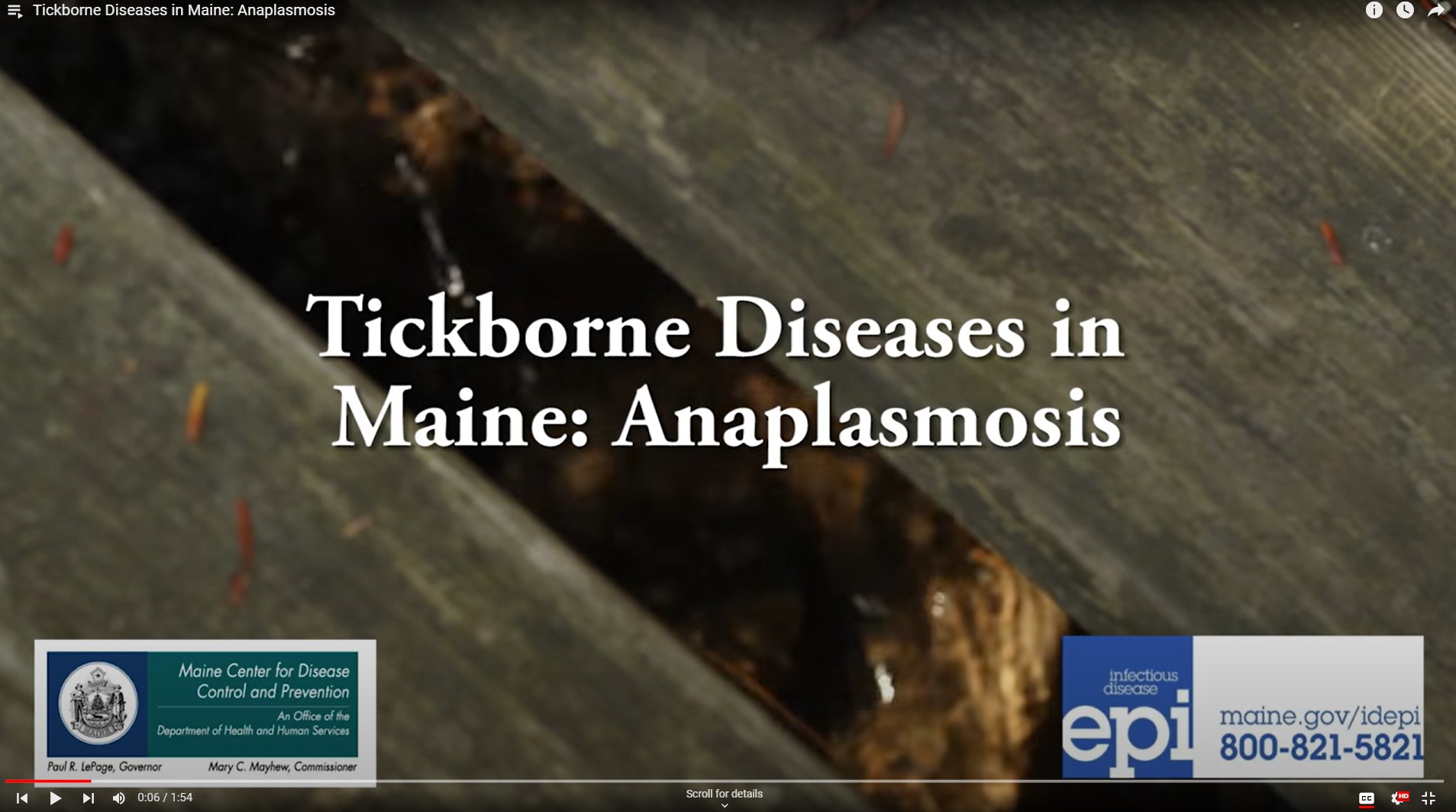
Tickborne Diseases in Maine: Anaplasmosis Video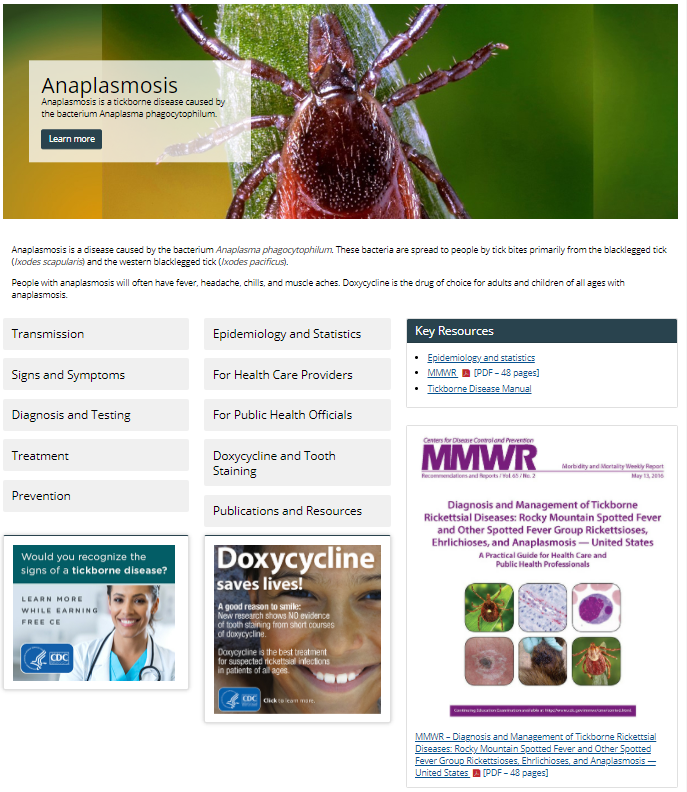
U.S. CDC Anaplasmosis Information
